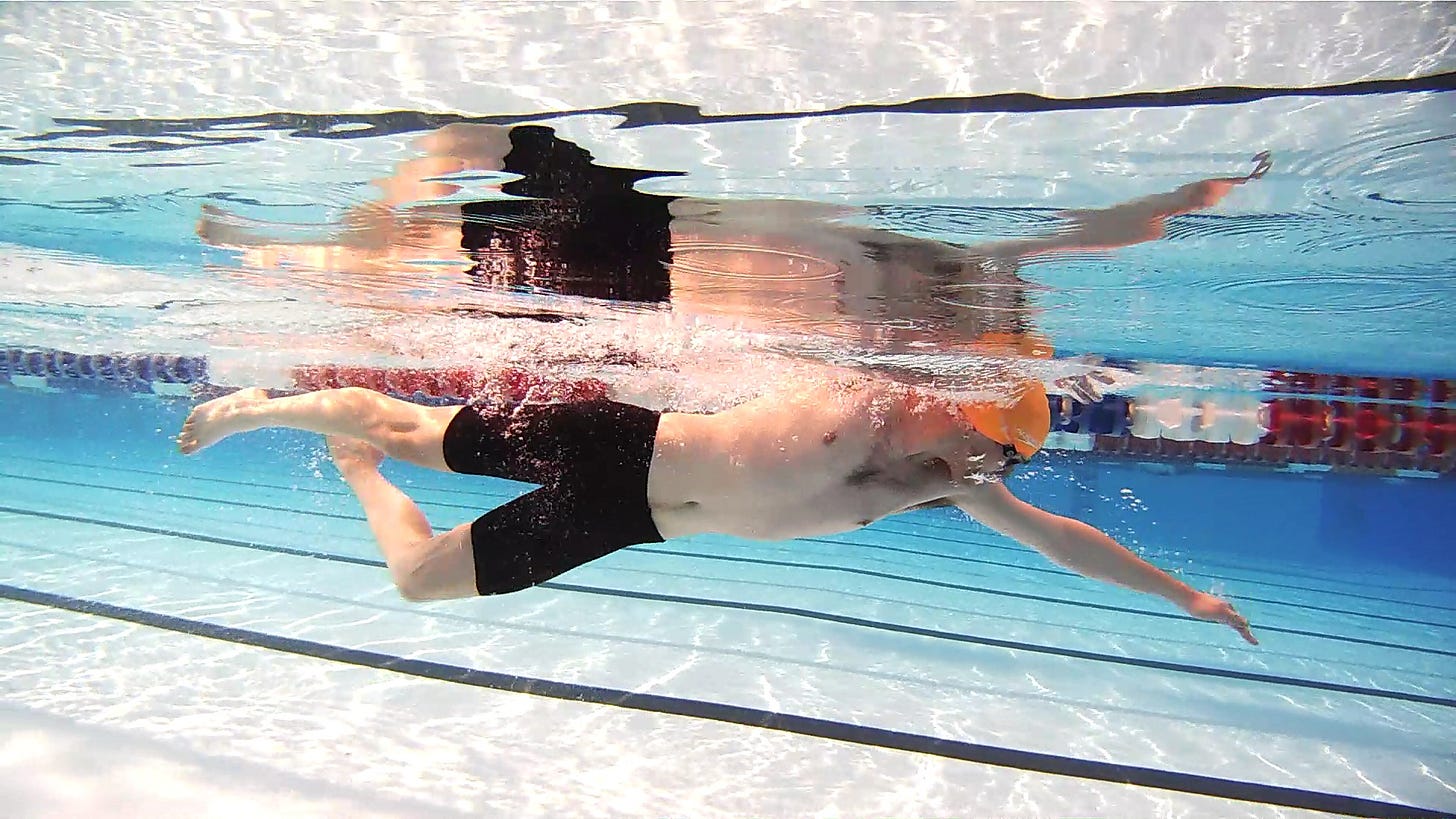🛠️ 5 Common Stroke Technique Flaws (And How to Fix Them)
Which of these common issues are affecting your stroke?
Hey Swimmers,
I’m really excited to let you know that for the first time ever I’ll be swimming the Dart 10k in Dartmouth UK, not once, but twice over the weekend of the 13th and 14th September this year and I’d love you to come join me!
Our friends at Level Water are offering Swim Smooth an exclusive 50% discount on charity places for any of their river swims. From the Bantham Swoosh/ Boomerang, Dart10k or the Hurly Burly, this is your chance to experience some of the most beautiful and wild stretches of water in the country.
Level Water funds specialist swimming lessons for children with disabilities across the UK, ensuring that every child has the opportunity to learn to swim and develop a love for the water.
By purchasing a ticket with a fundraising target, you’ll help provide 16 swimming lessons for a child with a disability in 2025.
Use code LWSMOOTH50 at checkout to claim your 50% discount and become part of the inspiring Level Water community.
5 Common Stroke Flaws (And How to Fix Them)
Even if you’ve been swimming for years—and sometimes especially if you have—it’s worth reviewing your stroke for ingrained habits that may be holding you back.
Most adult swimmers aren’t limited by strength or fitness, but by small inefficiencies in technique. That’s why you’ll often see elite juniors effortlessly passing strong, fit adults in the pool—technique trumps power every time.
Having analysed thousands of swimmers around the world, here are the five most common freestyle stroke flaws we see at Swim Smooth—and exactly how to fix them.
1. Holding Your Breath Underwater
The problem:
Many swimmers have been taught (incorrectly) to hold their breath underwater and then exhale forcefully just before breathing. But this creates tension, leads to sinking legs, and makes the whole stroke feel frantic.
How to fix it:
Start exhaling gently through your nose and mouth the moment your face is in the water. Practise this by standing in the deep end and exhaling until you sink—most people are surprised how much air they’ve been holding onto.
When swimming, aim to maintain a smooth, continuous exhalation between breaths. You’ll feel more relaxed and your legs will sit higher in the water.
2. Crossing Over in Front of the Head
The problem:
Your hands should enter and extend straight ahead—not across your body’s centreline. A crossover causes your body to snake through the water, increases drag, and often leads to scissor kicking (see flaw 3).
How to fix it:
Rather than forcing your hands wider, focus on posture:
“Shoulders back, chest forwards.”
This opens up your chest and naturally realigns your arms.
Practise kicking on your side with fins, one arm extended in front and the other by your side. Then in full stroke, visualise your middle finger pointing gun-barrel straight down the pool.
3. Scissor Kick
The problem:
This sideways splaying of the legs—often triggered during breathing—causes major drag and disrupts rhythm. It’s usually an unconscious reaction to a crossover stroke.
🙏 P.S Big thanks to Charlie, one of my 1-to-1 Video Analysis swimmers this week here in Perth for allowing us to share this clip with you. Stay tuned in future weeks for an update on her improvement!
How to fix it:
First, fix the crossover (see flaw 2). Then, reinforce a more compact kick by lightly brushing your big toes together as they pass—tap, tap, tap.
During breathing, focus less on the breath and more on maintaining that rhythm. A big gap between taps likely means a big scissor.
4. Kicking From the Knee
The problem:
Common in runners and cyclists, a knee-driven kick presents the thigh as a blunt object to the water, creating huge drag.
How to fix it:
Try this three-part drill:
Torpedo Push-Offs: Push off strongly and kick with straight legs for 10–15 metres.
Glute Activation: Imagine holding a coin between your glutes and gently clench as you kick.
Core Lengthening: Stay as long and tall as possible through your core during the kick.
Then swim easy to the end of the pool, maintaining the new action. Repeat for multiple rounds to reinforce the pattern.
5. Overreaching and Putting on the Brakes
The problem:
In an effort to “lengthen the stroke,” many swimmers over-reach and drop their wrist, presenting the palm forward and stalling momentum—effectively putting on the brakes.
How to fix it:
Back to the side-kick drill with fins: observe the angle of your lead hand. If your wrist is dropped, try tipping it slightly the other way—so your fingertips angle just a few degrees downward.
This subtle adjustment sets you up for a stronger catch and more effective pull. You may also notice your stroke rate increases slightly as a result—and that’s a good thing.
Final Word: Revisit the Basics, Swim Better for Life
Even advanced swimmers can benefit from reviewing the fundamentals. These five stroke flaws are common for a reason—but with the right awareness and drills, they’re surprisingly fixable.
Next week, we’ll look at how to stay calm and adapt when things go wrong on race day—from missed feeds to lost goggles and more. Because great swimming isn’t just about form—it’s also about resilience.
Keep reading with a 7-day free trial
Subscribe to Weekly Blog by Swim Smooth to keep reading this post and get 7 days of free access to the full post archives.



